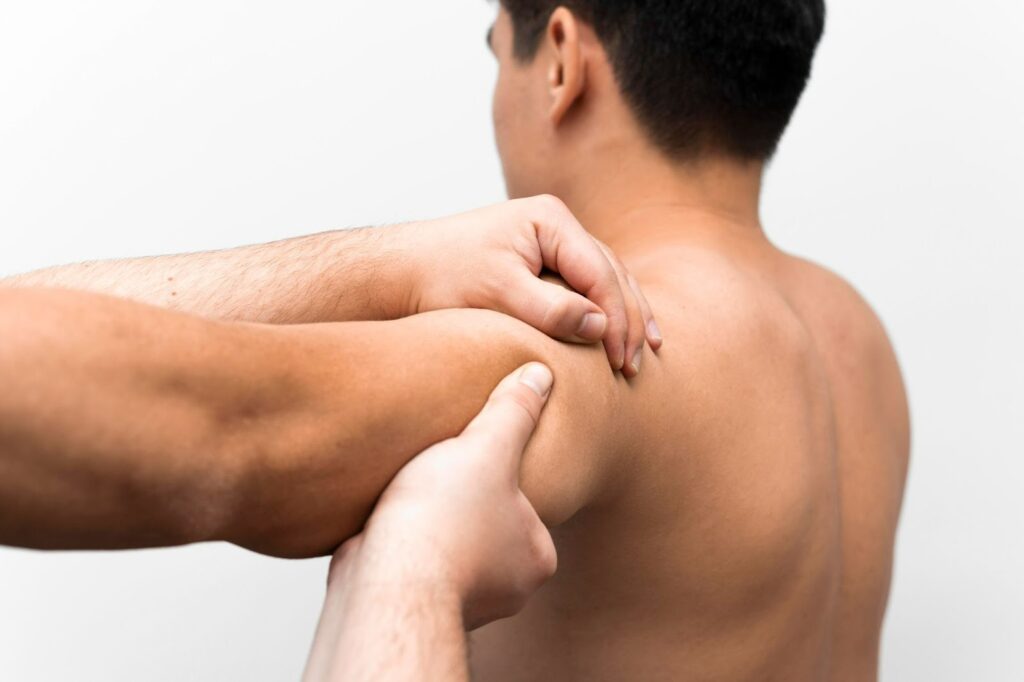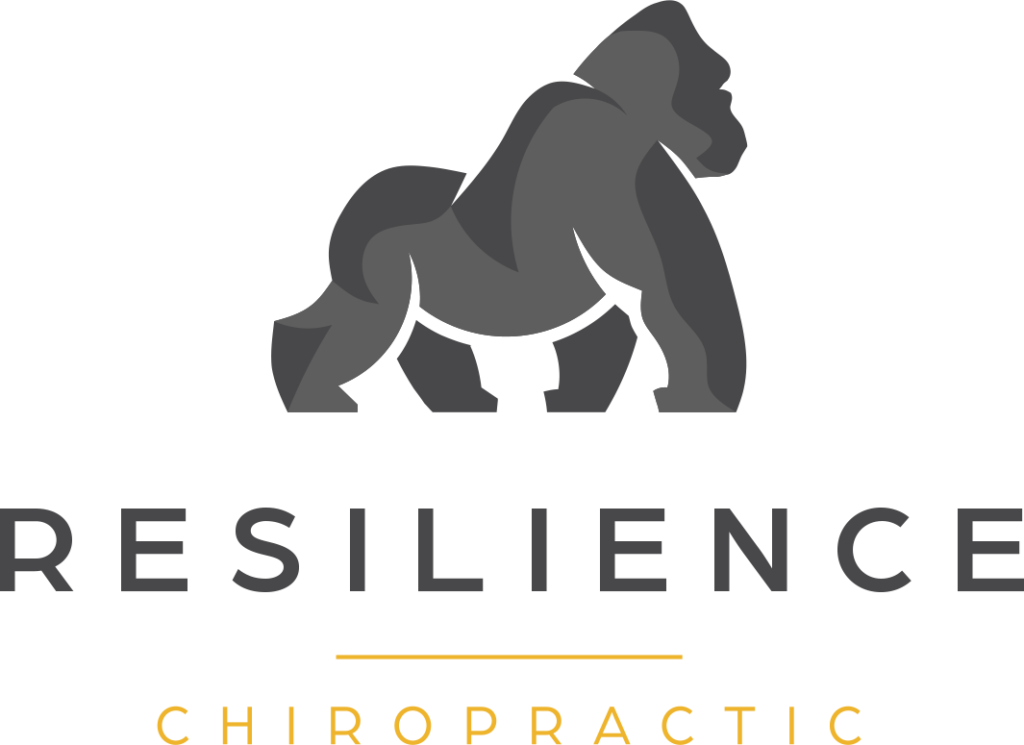Shoulder pain can sneak up on anyone — whether you’re an athlete, a weekend gardener, or simply someone who spends long hours at a desk. One of the most common culprits? Rotator cuff injuries.
These injuries don’t just make it hard to lift your arm or carry groceries; they can affect your ability to sleep, work, and enjoy your favorite activities.
In this article, we’ll break down everything you need to know about rotator cuff injuries — what causes them, how to spot the symptoms, and the most effective treatment options, including how chiropractic care can help restore shoulder mobility and strength naturally.
What Is the Rotator Cuff?
Your rotator cuff is a group of four muscles and their tendons that surround the shoulder joint — the supraspinatus, infraspinatus, teres minor, and subscapularis.
Together, they stabilize your shoulder, help you lift and rotate your arm, and keep the ball of your upper arm bone (the humerus) securely in your shoulder socket.
When everything is working properly, these muscles move in perfect harmony.
But when one or more tendons become inflamed, strained, or torn, pain, weakness, and limited range of motion quickly follow.
Common Causes of Rotator Cuff Injuries
Rotator cuff injuries don’t happen overnight — they usually develop over time due to repetitive stress or poor movement patterns. However, acute injuries can also occur suddenly, especially in athletes or those involved in heavy lifting.
Here are the most common causes:
1. Repetitive Overhead Motions
Jobs or sports that require frequent overhead movement — such as painting, swimming, baseball pitching, or weightlifting — place constant strain on the shoulder. Over time, this repetitive motion leads to tendon wear and microtears.
2. Poor Posture
Slouching forward or having rounded shoulders compresses the rotator cuff tendons, reducing blood flow and increasing friction. Desk workers are especially prone to developing shoulder impingement and chronic rotator cuff irritation.
3. Age-Related Degeneration
As we age, tendons naturally lose elasticity and strength. This makes them more vulnerable to fraying or tearing — even from minor movements. Degenerative tears are especially common in people over 40.
4. Traumatic Injury
A sudden fall, car accident, or lifting something too heavy can cause an acute rotator cuff tear. These injuries can be partial or full-thickness tears, often requiring immediate medical attention.
5. Poor Shoulder Mechanics
Weak stabilizing muscles, muscle imbalances, or improper lifting techniques put excess strain on the rotator cuff. Without proper alignment, the shoulder joint moves inefficiently, leading to cumulative stress and eventual injury.
Recognizing the Symptoms
Rotator cuff injuries can range from mild inflammation (tendonitis) to full-blown tears.
Common symptoms include:
- Dull ache deep in the shoulder
- Pain at night, especially when lying on the affected side
- Difficulty lifting or rotating the arm
- Weakness when reaching overhead or behind your back
- Clicking or popping sounds with movement
- Reduced range of motion
In many cases, symptoms start mild and worsen gradually. Ignoring them or pushing through pain can lead to long-term stiffness, chronic inflammation, or even frozen shoulders.
Types of Rotator Cuff Injuries in San Leandro
Understanding the type of injury helps determine the best course of treatment. Let’s look at the three main categories:
1. Tendonitis
Tendonitis occurs when the rotator cuff tendons become inflamed due to overuse. It often results from repetitive motion or poor posture.
Pain tends to be sharp when moving the arm but eases at rest.
2. Tendinosis
This is a chronic degeneration of the tendon tissue caused by long-term strain or poor healing. Unlike tendonitis, tendinosis doesn’t involve active inflammation but instead shows signs of tissue breakdown.
3. Rotator Cuff Tear
Tears can be partial (fraying of the tendon) or complete (the tendon completely detaches from the bone).
These are often accompanied by weakness, inability to lift the arm, and significant pain — especially during overhead activities.

The Role of Chiropractic Care in Rotator Cuff Recovery
While many people associate chiropractic with spinal adjustments, chiropractors are highly trained in musculoskeletal injuries — including shoulder dysfunction.
Here’s how chiropractic care in San Leandro helps with rotator cuff injuries:
1. Restoring Shoulder Alignment
Misalignment in the shoulder joint or surrounding structures (like the clavicle or upper spine) can alter movement mechanics, placing stress on the rotator cuff.
Gentle chiropractic adjustments restore proper alignment, allowing smoother joint motion and reduced friction.
2. Addressing Postural Imbalances
Many shoulder injuries stem from forward head posture and rounded shoulders. Chiropractors use posture correction techniques, ergonomic advice, and spinal adjustments to correct these imbalances — preventing re-injury.
3. Soft Tissue Therapy
Techniques like Active Release Technique (ART), Graston, and myofascial release help break down scar tissue, reduce adhesions, and improve blood flow to the damaged tendons.
4. Rehabilitation and Strengthening
Once pain decreases, chiropractors guide patients through targeted exercises to rebuild stability and endurance in the rotator cuff and scapular muscles.
5. Neuromuscular Re-education
By improving the communication between the brain and muscles, chiropractic care helps retrain proper movement patterns — so your shoulder functions optimally again.
6. Whole-Body Approach
Chiropractic care doesn’t just treat the shoulder — it looks at the entire kinetic chain.
Issues in the neck, spine, or upper back often contribute to shoulder dysfunction, so addressing these areas ensures lasting results.
Conventional Treatment Options
Treatment depends on the severity of the injury, your activity level, and how long you’ve had symptoms.
Mild cases can often be treated conservatively, while severe tears may require surgical intervention.
1. Rest and Activity Modification
Avoiding activities that aggravate the shoulder gives the tendon time to heal. However, complete immobilization for too long can cause stiffness — so gentle movement is key.
2. Ice and Heat Therapy
Ice helps reduce inflammation and numb pain in the early stages, while heat promotes blood flow and relaxation during recovery.
3. Physical Therapy
A tailored exercise program strengthens the shoulder muscles, restores mobility, and corrects imbalances that contribute to rotator cuff strain.
4. Anti-Inflammatory Medications
NSAIDs like ibuprofen can relieve pain temporarily but should not replace corrective care. Overuse can mask the symptoms without fixing the underlying dysfunction.
5. Corticosteroid Injections
In more severe cases, injections may be used to reduce inflammation. However, repeated injections can weaken tendons over time.
6. Surgery
For full-thickness tears or cases unresponsive to conservative care, surgery may be required to reattach the tendon. Post-operative rehab is essential for full recovery.
Key Exercises for Shoulder Rehabilitation
If cleared by your chiropractor at Resilience Chiropractic in San Leandro or physical therapist, these exercises can help strengthen and stabilize the rotator cuff:
1. Pendulum Swings
Lean forward and let your arm hang freely, making small circles. This improves circulation and mobility without straining the joint.
2. External Rotation with Band
Attach a resistance band to a doorknob. Keep your elbow at your side, rotate your forearm outward slowly, then return to start. Strengthens the infraspinatus and teres minor.
3. Internal Rotation with Band
With the same setup, rotate your arm inward across your body. Works the subscapularis muscle.
4. Scapular Retractions
Pinch your shoulder blades together while keeping your arms at your sides. Great for posture and stability.
5. Wall Angels
Stand with your back against the wall, arms bent at 90 degrees. Slowly raise and lower your arms like snow angels — maintaining contact with the wall throughout.
6. Sleeper Stretch
Lie on your side, arm bent at 90 degrees. Gently press your forearm down to feel a stretch in the back of your shoulder.
Tip: Perform these exercises under professional supervision initially, and avoid pushing through sharp pain.

Preventing Future Shoulder Injuries
Once you’ve recovered, the goal shifts to prevention.
Here are steps to keep your shoulders strong and healthy for the long term:
- Maintain Good Posture — Keep your head aligned with your spine and avoid slouching.
- Strengthen Supporting Muscles — Focus on the rotator cuff, scapular stabilizers, and upper back.
- Warm Up Before Activity — Gentle stretches and mobility drills prepare the shoulder for movement.
- Avoid Overtraining — Mix up your workouts to prevent repetitive strain.
- Use Proper Technique — Whether lifting weights or carrying groceries, move mindfully.
- Schedule Regular Chiropractic Checkups — Early detection of joint dysfunction prevents chronic issues from forming.
Take Care of Your Shoulders Before They Break Down
Your shoulders are one of the most mobile — and vulnerable — joints in your body.
A rotator cuff injury can turn simple tasks like reaching for a shelf or brushing your hair into a challenge. But with the right approach, recovery is absolutely possible.
Chiropractic care at Resilience Chiropractic, combined with guided rehabilitation and lifestyle changes, offers a safe, effective, and lasting solution — helping you restore strength, prevent recurrence, and return to the activities you love.
Don’t ignore that lingering shoulder ache. It’s your body’s way of asking for help. Whether you’re dealing with a mild strain or chronic shoulder pain, a chiropractic evaluation can help identify the root cause and put you on the path to healing — naturally. Call us today at (510) 738-0942 to schedule your shoulder evaluation and start your recovery journey.




